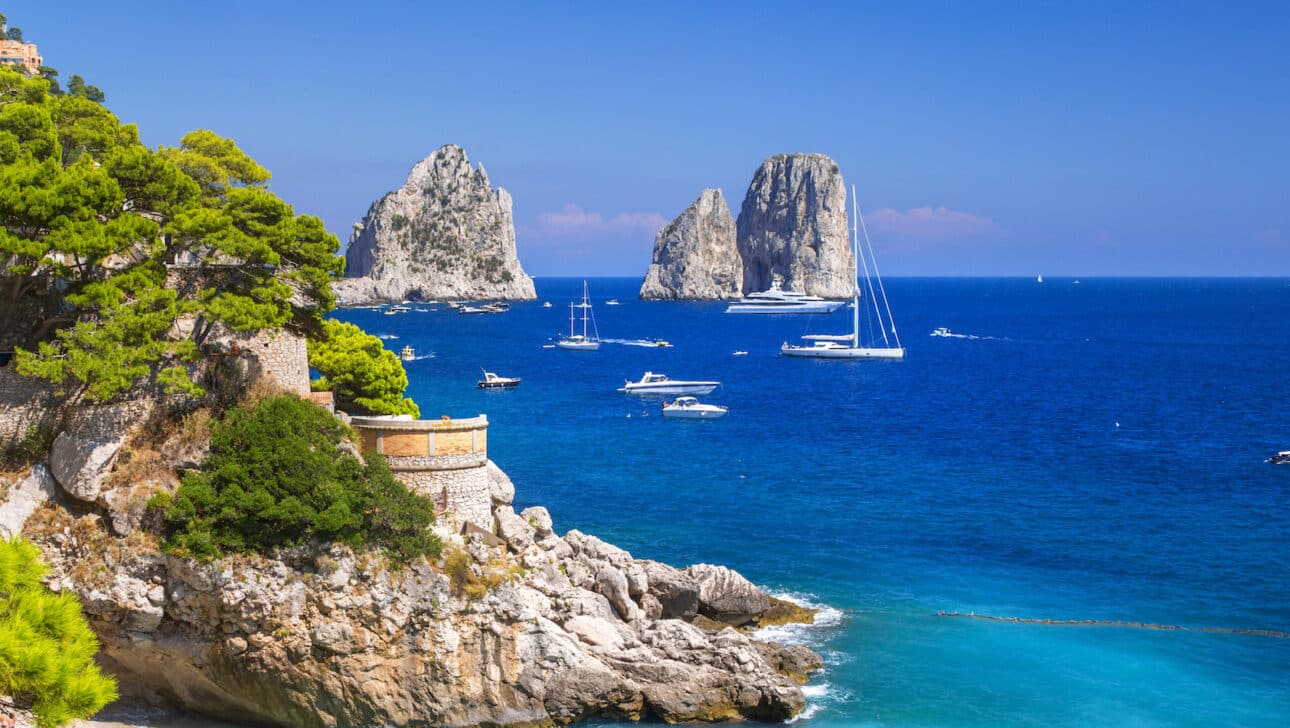Once you’ve been to Southern Italy, it’s no longer just a point on a map. The simple act of perusing a farmer’s market on Sicily or sailing around the island of Capri fills the reservoir of your psyche to the brim. Long after returning home, you likely find that the simplest thing can open a floodgate of treasured memories: a waft of fresh lemon, dappled sunlight on the water, the beads on a glass of Aperol Spritz, or even a casual scroll of your Instagram feed, which likely boasts no shortage of the region’s postcard-perfect views. From armchair archaeologists to zabaglione zealots, myriad multi-sensory experiences await. Here are a few of our favorites:
Naples

Fans of Elena Ferrante’s novels will no doubt revel in strolling the grittier streets of the historic center of Naples, walking in the path of Lenù and Lila, the fictional protagonists of her stories. However, if you haven’t read the books, I recommend watching “My Brilliant Friend,” an Italian and Neapolitan-language drama series based on the books created by Saveri Costanzo for HBO.
Naples has the distinction of being credited as the birthplace of pizza in the 18th century as a cheap and speedy way to feed the working poor. Today there are more than 800 pizzerias in the city, and while this writer believes there is no such thing as bad pizza, look for an AVPN designation on the door, which means the establishment is a member of the True Neapolitan Pizza Association. Better yet, look for a long line of locals waiting to get in. Standouts include Gorizia (opened in 1916), Sorbillo (huge pies topped with Campanian produce), and L’antica Pizzeria da Michele Forcella (which only makes margherita or marinara pizzas).
Pompeii & Herculaneum
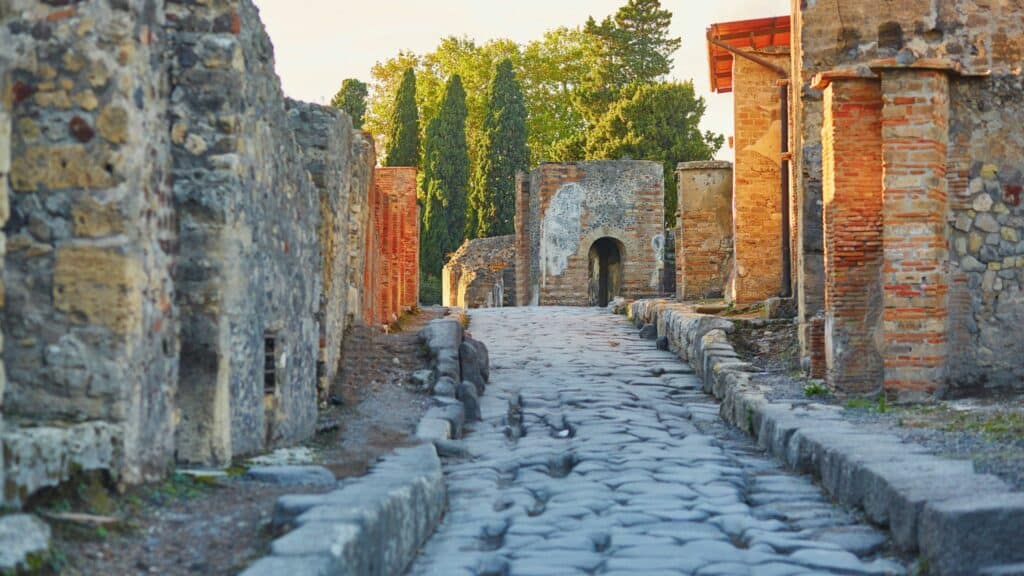
Captivating and eerie, the ruins at Pompeii have fascinated millions of visitors since being unearthed in the 16th century under 19 feet of ash and other volcanic debris. The UNESCO World Heritage Site, located at the base of Mt. Vesuvius, provides an in-depth look at the complex society frozen in time when the volcano erupted around 79AD, including intricate mosaics, ancient graffiti, and even large frescoes depicting available services in the 25 brothels unearthed at the site.
Sorrento
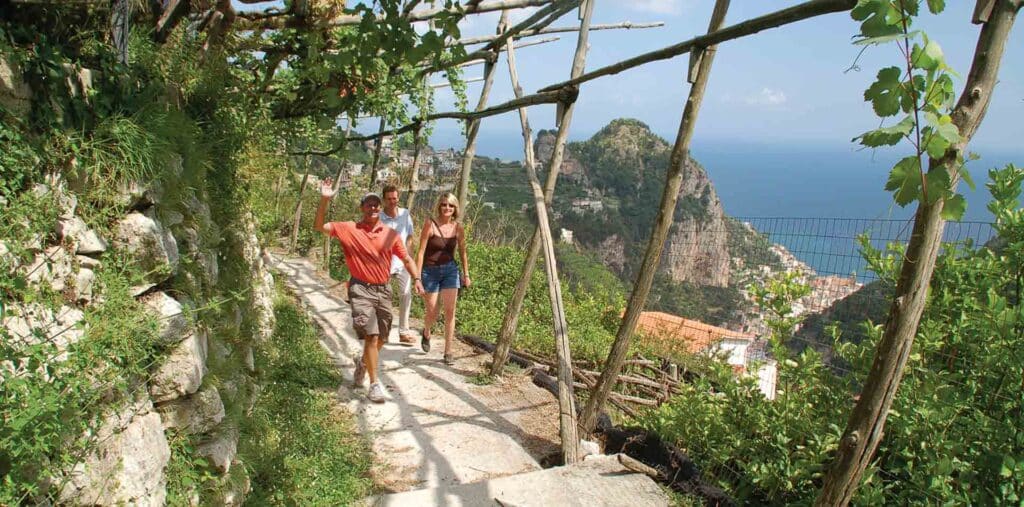
Perched dramatically on a cliff high above the Bay of Naples, so that nothing stands between you and endless vistas of sea and sky, sunsets on the celebrated Vittoria Terrace at the Grand Excelsior Vittoria in Sorrento are nothing short of spectacular. Opened in 1834 and set amidst five acres of lushly manicured gardens resting atop Roman ruins, you feel a distinct sense of arrival once you leave the bustling city center at Piazza Tasso—as much a living and breathing city as a tourist destination—and pass through the hotel’s Art Nouveau entrance gate.
Outside Sorrento, there are several hiking trails on Mount Faito, which reward trekkers with 360-degree views of the surrounding area, including the islands of Capri, Ischia, and Procida.
Amalfi Coast
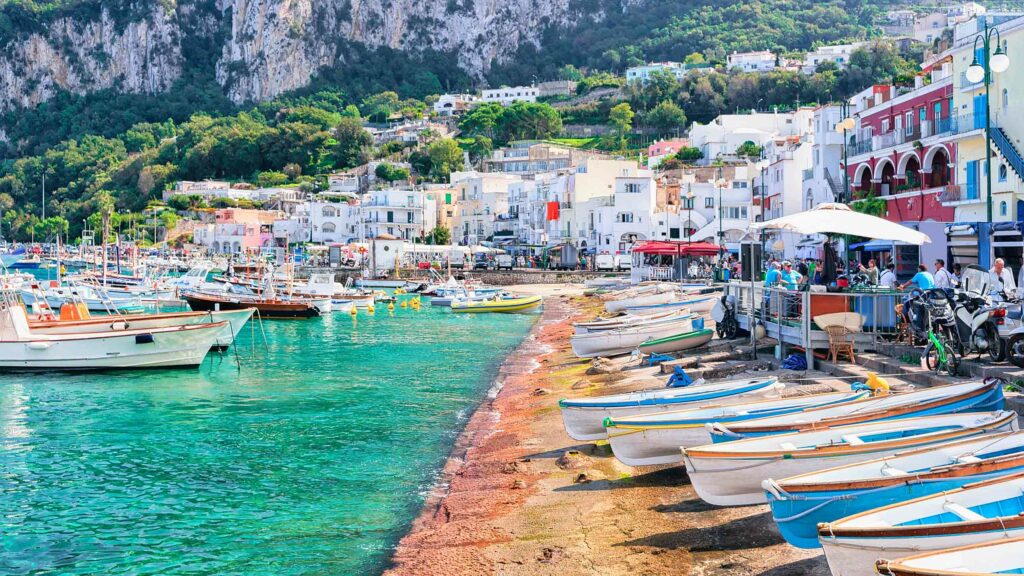
The best way to explore the coast is by chartering a boat – a classic wooden Riva Aquarama if possible. Once you’ve experienced the crush of tourists inching up and down the narrow corridors in the seaside towns, you may find that you prefer the tranquil way the terraced buildings appear from the water. Be sure to stop for lunch at Maria Grazia on the waterfront in Nerano. If summer had a flavor, it would be their dessert of freshly-picked wild strawberries simply dressed with a dollop of whipped cream and washed down with Maria Grazia’s house-made limoncello.
Sicily
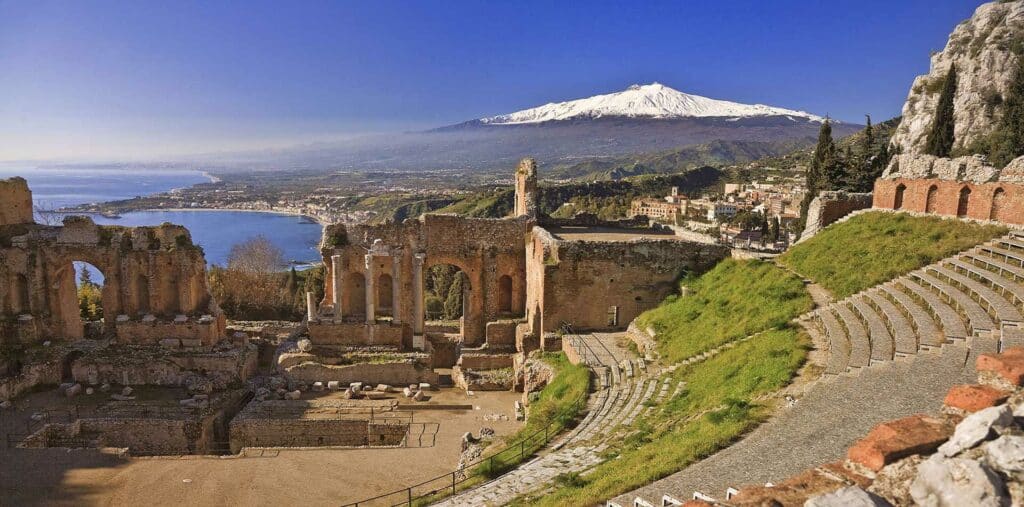
The demure size of Taormina, a tourist capital of Sicily popular since its inclusion as a stop on the Grand Tour, belies its importance as a conquest for the Greeks to the Spanish, each of whom left their mark on the “Pearl of the Mediterranean.” Stop for lunch on the terrace of Trattoria Il Barcaiolo, which sits in an alcove of the Ionian Sea, and watch brave souls plunge into the azure waters from towering sea stacks.
Take a cable car from the beach to the historic town center, perched on a rocky promontory. The town’s piece de resistance is its Greek-Roman theatre, dating to the third century BC and boasting views that would certainly force performers to be at their best to compete for attention.
Hiking the moonscape-like lava fields around the active Mt. Etna volcano is best left to a guided tour to understand the complex geography fully. From a safe distance, it’s mesmerizing to watch the clouds that swiftly swirl around the volcano’s nearly 11,000-foot apex commingle with plumes of steam emanating from the crater.
Syracuse, and its island heart, Ortigia, retain a fair share of Greek and Roman architectural remains, along with Medieval Norman and Baroque structures. After admiring the Piazzo del Duomo, with its cathedral built atop a temple to Athena, epicures must make a point to visit the Il Gusto dei Sapori Smarriti delicatessen located at one end of the market in Piazza Cesare Battisti, to sample Sicilian delicacies. And, speaking of deliciousness, the granita at Caffè Sicilia in Noto is regarded as some of the best in Sicily.
Planeta, one of the largest wineries in Sicily, offers guided tours of the five DOC appellations where they have vineyards, including tours that combine wine and food pairings, bicycling, and a Grand Cru focus.
Capri
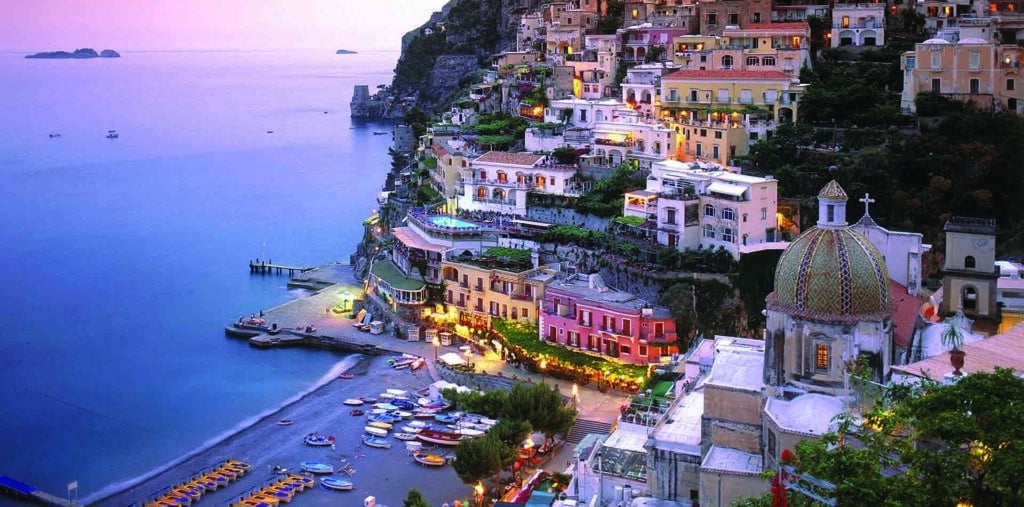
Although it’s one of Southern Italy’s most storied destinations, there are still hidden gems to be discovered on the island, a long-time favorite of the glitterati. With its plethora of high-end shopping and dining options, you might be surprised to learn of beautiful and challenging hikes on Capri for those who know where to look. Many of these trails, some used since ancient times, are restored and maintained by the Associazione Percorsi e Sentieri Isola di Capri. The “Hunter’s Path” travels from Arco Naturale to Vanassina, and offers views of two cliffside caves. Rewards for the curious hiker include hidden grottos—some used since prehistoric times—interesting geological formations, and Grecian, Phoenician, and Roman ruins.
In each of these Southern Italy destinations, having the benefit of a guided tour cuts out the logistical nightmares that often plague DIY adventures, freeing you up to fully focus on savoring once-in-a-lifetime experiences tailored to your interests.

